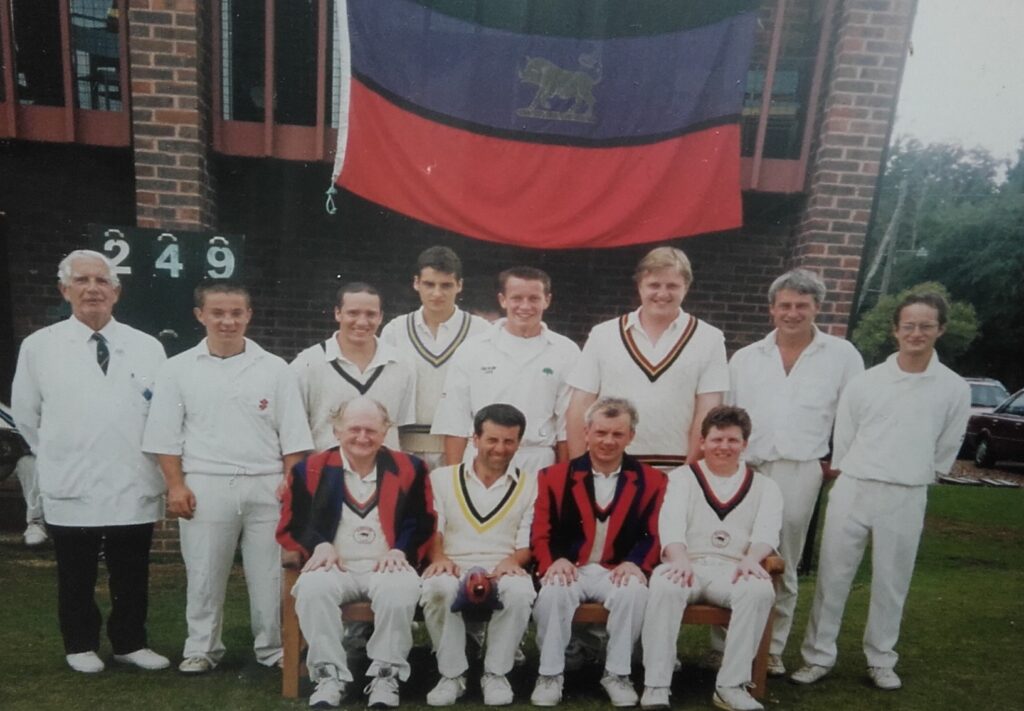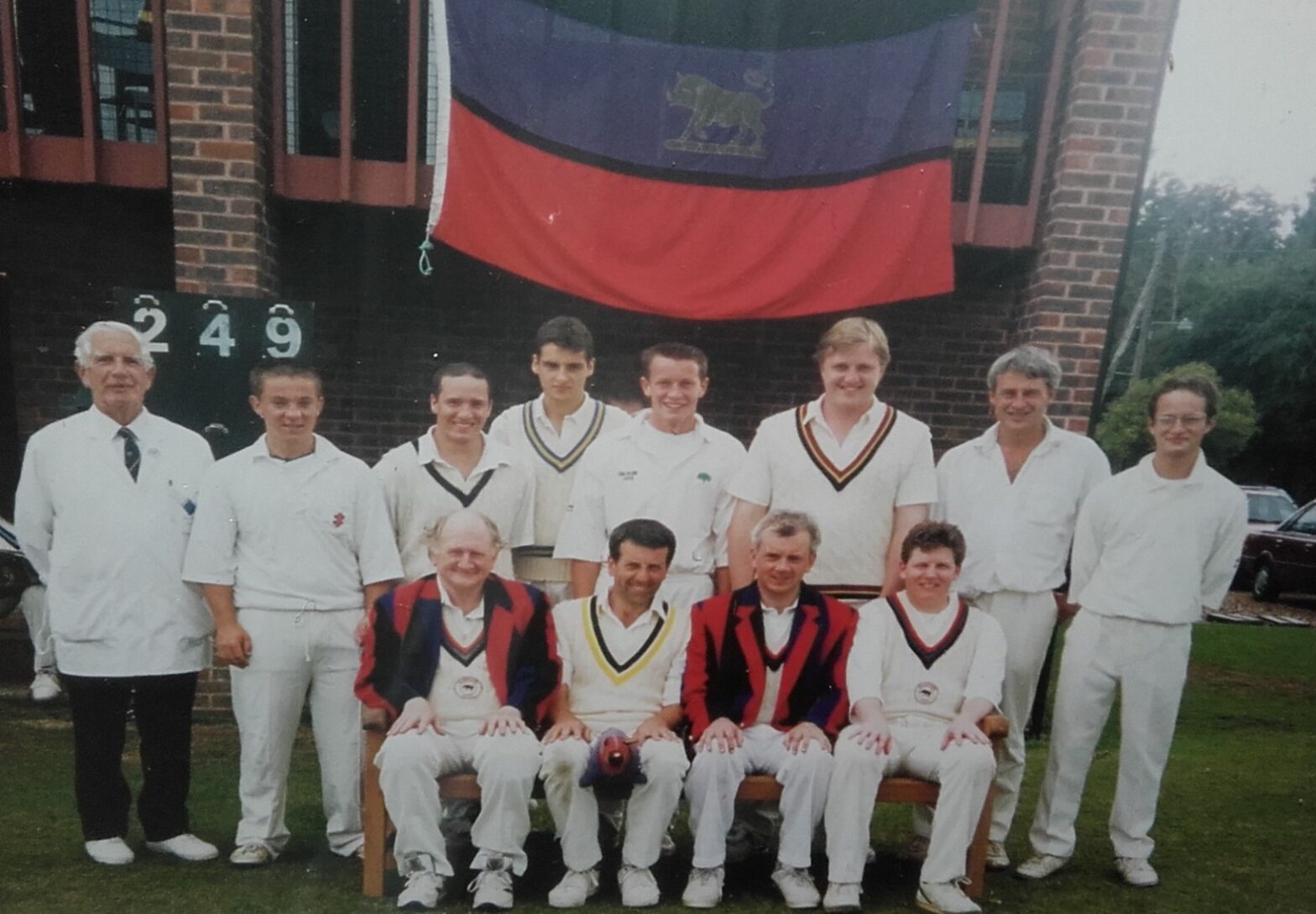1,405 wickets for Hampshire Hogs. He counted his victims and remembered their names.
Prodigious powers of spin, subtle change of pace, surprising bounce, an occasional googly or doosra – great slow bowlers are often recalled for a particular skill that accounted for their success.
Christopher Bazalgette possessed none of these weapons. He imparted no “revs”. Yet he took more wickets, more consistently, over a longer period, than anyone I played with or against.
Pressed to explain this puzzle in the bar, after another humiliated opposition eleven had departed, “Gette” would set aside his ritual banter and concede: “I am a slow bowler”, adding something vague about a “little drift to the off.”
I must have stood at slip for many hundreds of Bazalgette overs and confess to only the rarest sighting of this “drift”. His true dark art was in field-placing, as precise as his badgered team-mates would permit. In his prime he bowled to a 7-2 offside field, always against the better judgement of the captain of the day.
I used to describe this tactic as off-bodyline, amusing myself by modifying the earliest descriptions of what was happening in the infamous Ashes series of 1932-33:
The attack was on OFF the line of the body, threatening NO injury to the batsman, with a packed legOFFside field, so that it was almost impossible to score without hitting the ball in the air
Serious-minded opponents would stand by the sightscreen before their innings, desperate for informed preparation. There was little to note, other than a great deal of gesticulation to fielders and a very slow-moving ball. Only the most observant would have spotted those 2-3 steps in the middle of the short run-up when this unathletic figure achieved a fleeting moment of rhythm and balance, critical to control in the delivery.
The new batsman first defends, with exaggerated care, comforted to discover no venom. Soon it’s time to think about a single to get under way. But there are no easy singles on the off; open spaces to the legside beckon but it’s risky to abandon the principle of the straight bat.
By now I observe the batsman’s feet making nervy little movements as Gette begins his run, exactly what not to do. He plays back instead of forward, inexplicably missing the ball. Once or twice he leaves the crease with intent but is somehow forced to defend.
Then at last a moment of courage results in a hefty clump for four over the covers. The bowler seems strangely pleased. This pattern of jittery run-seeking continues, perhaps including a swipe to leg between mid-on and mid-wicket. But this batsman is doomed, each ball reeling him in a little further. It ends wretchedly – a desperate lunge to the off skies a catch to extra cover.
These dismissals were excruciating to watch with such regularity. On occasion I offered words of sympathy. But Bazalgette had a photographic memory of the suffering and had no qualms about replaying the detail on multiple occasions when meeting opponents in later years.
There were two flaws in Gette’s strategy. The first was its dependence on good fielders, swift of foot, sure of catch and fit enough to stay the distance, covering Warnford’s big open spaces. There were days when judicious shuffling of resources came close to realising this dream. But the reality was that we had not been coached in the acrobatics that fielders now indulge, nor to restrain enjoyment of a good lunch. By 3pm we were often knackered and Gette’s body language in freefall.
The other flaw was that Bazalgette was toast to the very best club batsmen, not infrequent visitors to Warnford. When Rupert Cox played against us, he would nonchalantly walk out of his crease, bat raised, as though the pitch was a road to be crossed. He would tap the ball through a gap in the field and cross the road for a single. Then a tap into a bigger space with time to run two. Gette would become flustered, make an error and away goes a sweep to the vacant square leg boundary.
If Rupert had written a book titled “How to play Bazalgette”, it would have been a best-seller across the south of England.
Bazalgette’s wicket number 1000 came appropriately in year number 2000, at the Oxford “jazz-hat” cricket festival. I’d like to boast that as captain I played a pivotal role but all I did was toss the coin. Rupert Cox scored a century and Gette made it clear when he wanted to bowl.

Bazalgette was 61 at the time and in pretty poor shape. As the champagne flowed after that match, most of us presumed that the congratulations would ease his path into retirement. Of all the statistics to admire in his record, nothing matches the further 400 wickets taken over the decade that followed.
Last week cricketers from all parts filled Southwick Church to send the maestro on his final journey. He had played the game with gusto worthy of the 18th century cricketing legends of our part of Hampshire. His memory will join theirs, etched into the downland cricket fields they all loved.
Bazalgette once played for me at Sparsholt, kindly filling in at the last moment. It was our traditional end-of-season fixture against Lymington, a friendly match in which batsmen might relax. When Neil Trestrail, Lymington’s most experienced and travelled cricketer, came in to bat, he was nonplussed to be confronted by the familiar rotund figure waving fielders here and there. Pausing to collect himself, Trestrail confided with our wicket-keeper: “I cannot think of anyone I would rather not see.”
********
This article adopts cricketing terminology consistent with the period described
